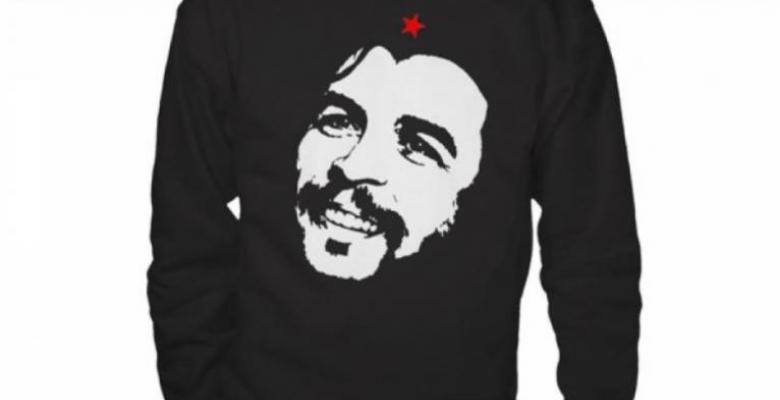Che, Much More Than Fashion
especiales

The market is a cold and pragmatic machine, alien to any idea other than the market's own trend. It’s impossible to absolutely escape the game of the market, because turning our backs on it would imply leaving the most basic framework of social relations. What most of us could seek at best is not to allow the market to impose immutable standards on us. But let's be clear, even the very fact of escaping the standards of market means a position within the market: I have to dress, I have to wear shoes, I have to eat...
Let's get down to business: let's say you are a convinced and militant communist, and you have Ernesto Guevara as an example to follow, if you want to wear a sweater with the guerrilla's image you will have to pay for it at a store. And the sweaters they sell in the store are there because a company made them and has income from the image of Che. Let's ignore where the income from the commercialization of this image goes, it may have a noble purpose. But right now, in Cuba, it’s very difficult for someone to access an article that bears at least the signature of Che Guevara if they don’t have a few dollars in their pocket.
There’s, undoubtedly, a certain conflict here. Che stands as a universal symbol of confrontation with the whims of the market, of global capitalism. It’s most likely that he himself would reject the extreme commercialization of his image. It would seem superficial. A banal act. The simplification of an ideology.
Isn't it at least paradoxical that the system of symbols of a historical epic, of a process that aims to transcend specific circumstances, ends up being purely fashionable? It’s clear that legions of people without marked commitments have appropriated the revolutionary imagery, blurring the content in this standardization of the continent.
Someone who has not the slightest idea of the revolutionary itinerary, of the historical significance of Che, can buy a black beret with a star, a t-shirt with his face printed on it, a canteen with his signature... and use them because it’s "chic" to use them, because it grants a certain status, because "it’s in fashion."
Nobody can avoid it. These are the rules of the market.
There are, moreover, people who fully identify with this legacy, who defend it day after day, who feel an active part of the daily struggle that Che represents... and who have the right to wear clothes that express his commitment. Because wearing a T-shirt with the famous face of the Argentine guerrilla can also be an act of reaffirmation, a declaration of rebellion, a political position.
It’s a snake that bites its tail, because unfortunately the latter do not always have the necessary resources to acquire these items.
It happens with the figure of Che, which has also become a tourist attraction, and it happens with other national symbols or those of the Revolution. How can we explain that the only way to acquire a Cuban flag today is to pay for it in USD —very expensive, by the way— at a souvenir shop?
But that’s a topic for another comment. Let’s focus on Che. It’s clear that his historical legacy cannot be limited to a beret, a T-shirt or a keychain. Che is much more than fashion. He is a compelling paradigm, full of meaning. Reducing his imagery to a purely aesthetic question rather than a frivolity seems inconsistent.
From the shop windows it looks at us, multiplied in garments of all kinds. But its true mark is elsewhere. It’s an ineffable mark, which cannot be encompassed (at least in its very essence) by the mechanisms of the market.
Translated by Amilkal Labañino / CubaSí Translation Staff













Add new comment